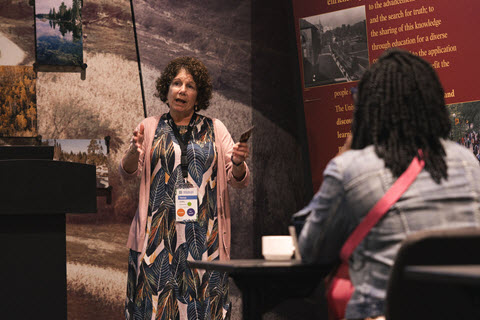- Candidates
- Login
- Set Up Account
- Create a Job Alert
- Search Tools
- Resources
- Employers

When it comes to Total Rewards and Benefits, we are used to “thinking outside the box,” but what if we were to “think as if there were no box”? This innovative stance really resonated with the room during the 2024 Agriculture & Food Roundtable breakout session titled "Rewards Revolution," led by Theresa Gridley, CEBS, CMS, RPA, the Director of Total Rewards at the Wenger Group, Inc. The session provided a fresh perspective on modernizing employee benefits and highlighted key strategies for aligning rewards with the evolving needs of today’s workforce.
The Evolution of Total Rewards
Historically, compensation packages have heavily focused on monetary rewards such as salaries, bonuses, and benefits. While these components provided financial stability, they often overlooked a diverse workforce's broader, more nuanced needs. As the work environment evolves, there has been a significant shift towards a more holistic approach to Total Rewards. This shift acknowledges that employee satisfaction and productivity extend beyond mere financial compensation.
The Rise of Well-being
A prominent trend in the evolution of Total Rewards is the increased emphasis on employee well-being. Employers now understand that a healthy and happy workforce is more productive. This realization has led to integrating wellness programs, mental health support, and initiatives to promote a healthy work-life balance into Total Rewards packages.
Wellness programs have become integral, including comprehensive health benefits, access to mental health resources, and incentives for maintaining a healthy lifestyle. By supporting employees’ physical and mental health, organizations enhance individual well-being, improve overall productivity, and reduce absenteeism.
Personalization and Flexibility
Another key trend is the move towards personalization and flexibility in benefits offerings. The “one-size-fits-all” approach is becoming obsolete as organizations recognize that employee needs and preferences vary widely. Today’s employees expect benefits catering to their circumstances and career aspirations.
Flexible work arrangements, personalized learning paths, and customizable benefits packages are now standard. For instance, flexible working hours or remote work options allow employees to balance their professional and personal lives more effectively. Personalized learning opportunities, such as tailored training programs and career development resources, help employees grow in their roles and achieve their professional goals.
The Role of Technology
Technology is crucial in managing and communicating benefits effectively. Digital platforms and tools streamline the administration of benefits and enhance employee engagement. Benefits management software, for example, provides employees easy access to information about their benefits, tracks their usage, and facilitates personalized recommendations based on their preferences and needs.
Technology also supports data-driven decision-making. By analyzing data on employee engagement and benefits utilization, organizations can identify trends, assess the effectiveness of their rewards programs, and make informed adjustments to meet the needs of their workforce better.
Engaging Employees in the Process
A significant takeaway from the session was the importance of engaging employees in designing and communicating benefits packages. To ensure that the Total Rewards program meets employees’ needs, organizations should actively seek feedback and preferences from their workforce. Regular surveys and open communication channels provide valuable insights into what employees value most in their compensation and benefits.
Transparency is also essential. Communicating the details of the Total Rewards program, including the value of both monetary and non-monetary benefits, helps employees understand and appreciate the full scope of their compensation. Regular updates and easy access to benefits information reinforce the organization’s commitment to employee satisfaction and engagement.
Tips for Offering Total Rewards
Conclusion
The evolution of Total Rewards reflects broader shifts in the workplace and workforce expectations. From focusing on financial stability to a more comprehensive approach that includes well-being, flexibility, and personalization, Total Rewards programs are evolving to meet the diverse needs of today’s employees. By adopting these insights and strategies, organizations can enhance employee satisfaction, drive engagement, and position themselves as employers of choice in a competitive talent landscape.
As you refine your benefits package, exploring tools and resources that can provide additional insights into market trends and compensation benchmarks may be beneficial. The AgCareers Compensation Benchmark Review and HR Review Survey offer valuable data and analysis to help you stay competitive and informed. By leveraging these insights, you can ensure that your Total Rewards program meets and exceeds your workforce's expectations, driving long-term success and satisfaction.